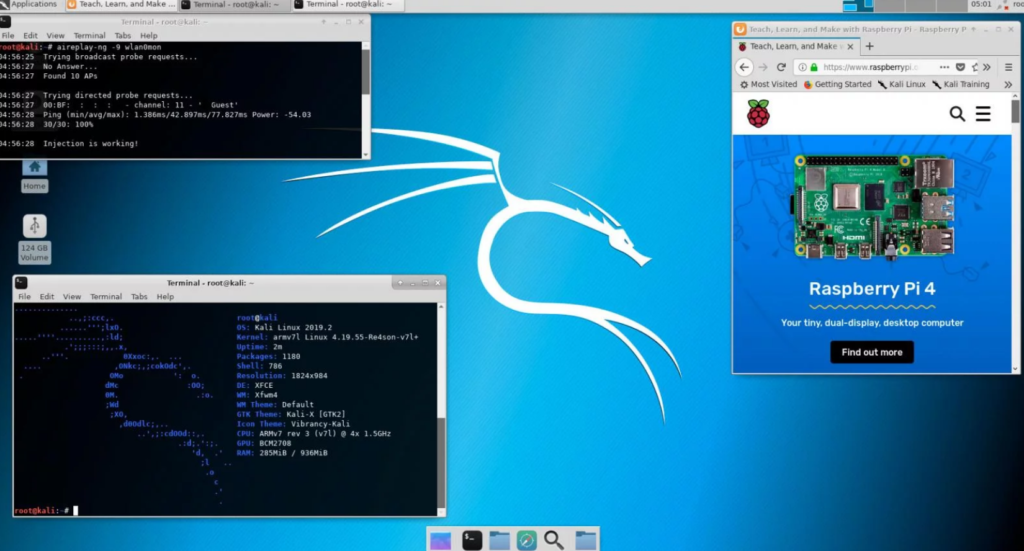A new version of Kali Linux has been built for the Raspberry Pi 4. Bleepingcomputer did a quick write up found HERE. Here is that post from bleepingcomputer
Do you have a Raspberry Pi 4 sitting around waiting to have some fun? If so, then you will be happy to learn that Kali Linux is now available for the Pi 4!
The Raspberry Pi 4 is a sweet little machine with more than enough power to run a Linux distribution on it:
- A 1.5GHz quad-core 64-bit ARM Cortex-A72 CPU (~3× performance)
- 1GB, 2GB, or 4GB of LPDDR4 SDRAM
- Full-throughput Gigabit Ethernet
- Dual-band 802.11ac wireless networking
- Bluetooth 5.0
- Two USB 3.0 and two USB 2.0 ports
- Dual monitor support, at resolutions up to 4K
- VideoCore VI graphics, supporting OpenGL ES 3.x
- 4Kp60 hardware decode of HEVC video
- Complete compatibility with earlier Raspberry Pi products
The developers behind Kali Linux agree and have made it so that their distribution is compatible with Raspberry Pi 4 and has “

To get started, you can download the Raspberry Pi 4 image from Kali’s website and following these instructions to get it setup.
If you have not purchase a Pi 4 yet, be careful as it has been discovered that not all USB-C cables will work properly with the Pi 4. So if you plan on purchasing one, make sure you use a supported cable as described by Tyler Ward below.
Now onto some solutions. Assuming the issue you are having is caused by the problem discussed above, using a non e-marked cable (most USB-C phone charger cables are likely this type) rather than an e-marked cable (many laptop charger/thunderbolt cables and any 5A capable cable will be in this category) will allow for the pi to be powered. In addition using older chargers with A-C cables or micro B to C adaptors will also work if they provide enough power as these don’t require CC detection to provide power. Ultimately though the best solution in the long run will be for there to be a board revision for the pi 4 which adds the 2nd CC resistor and fixes the problem.